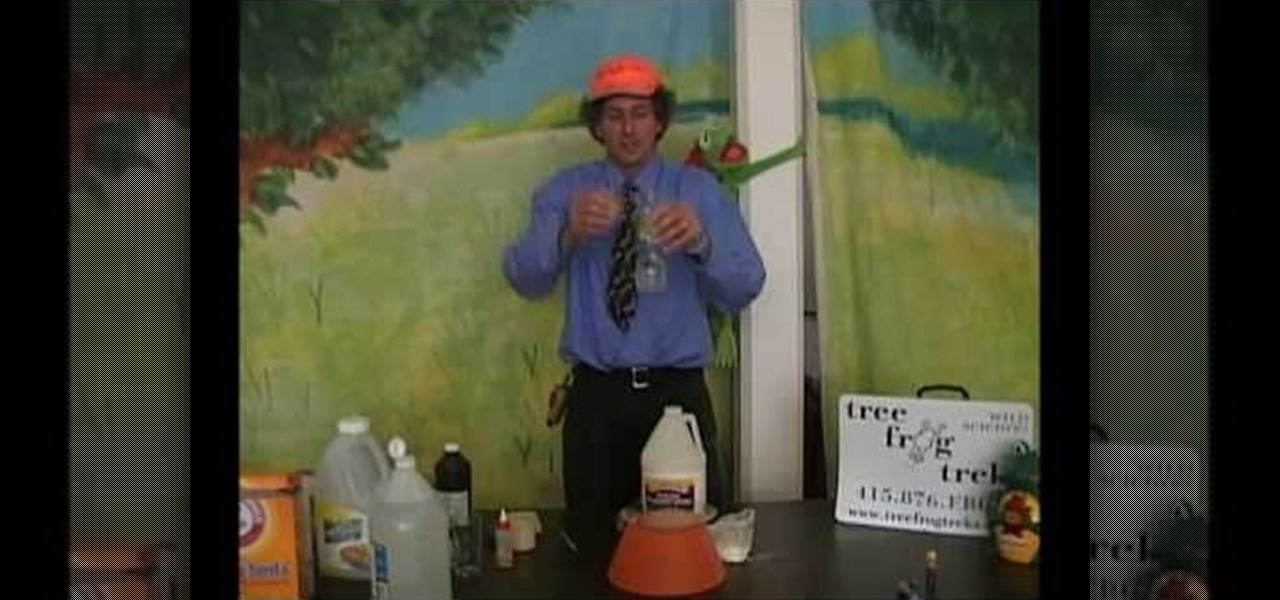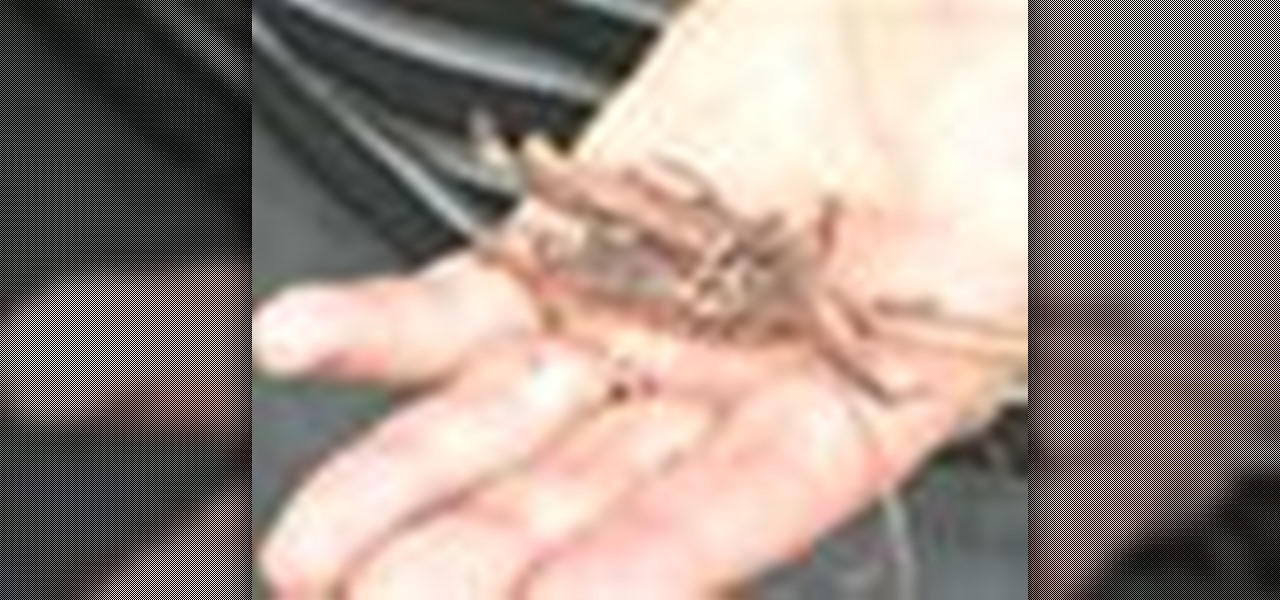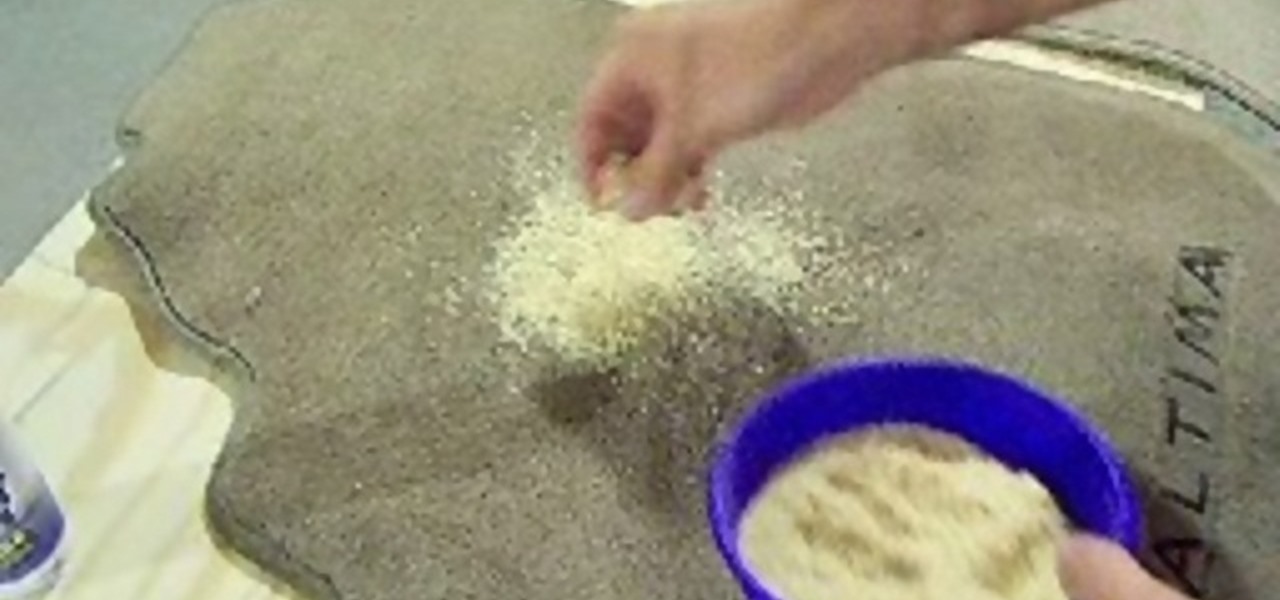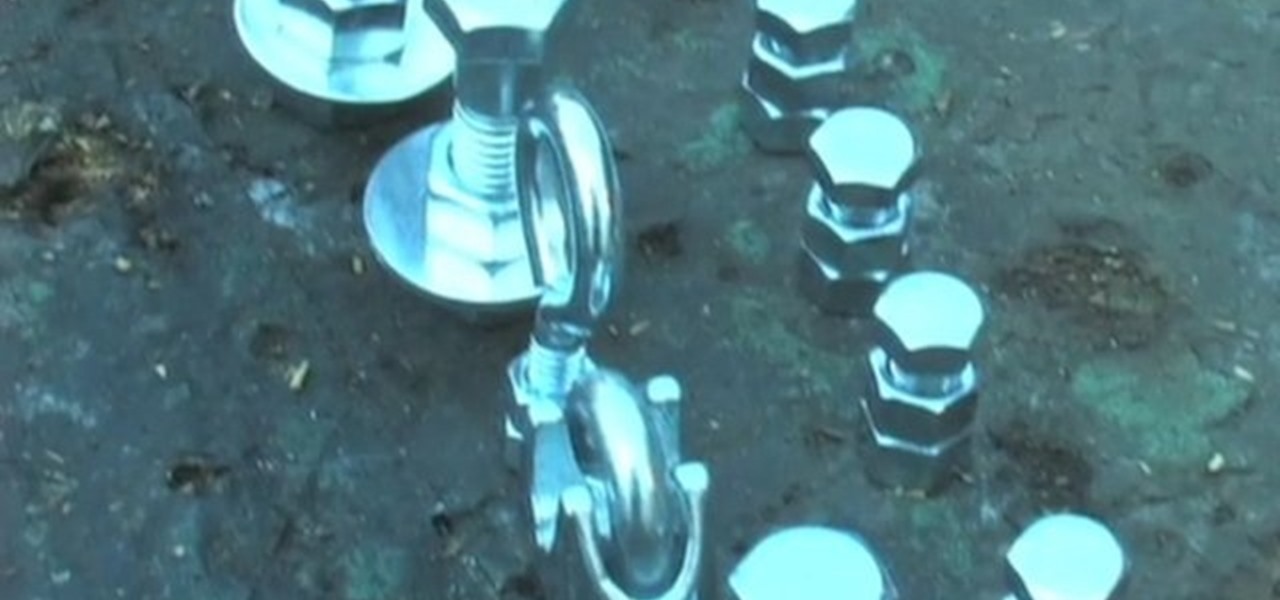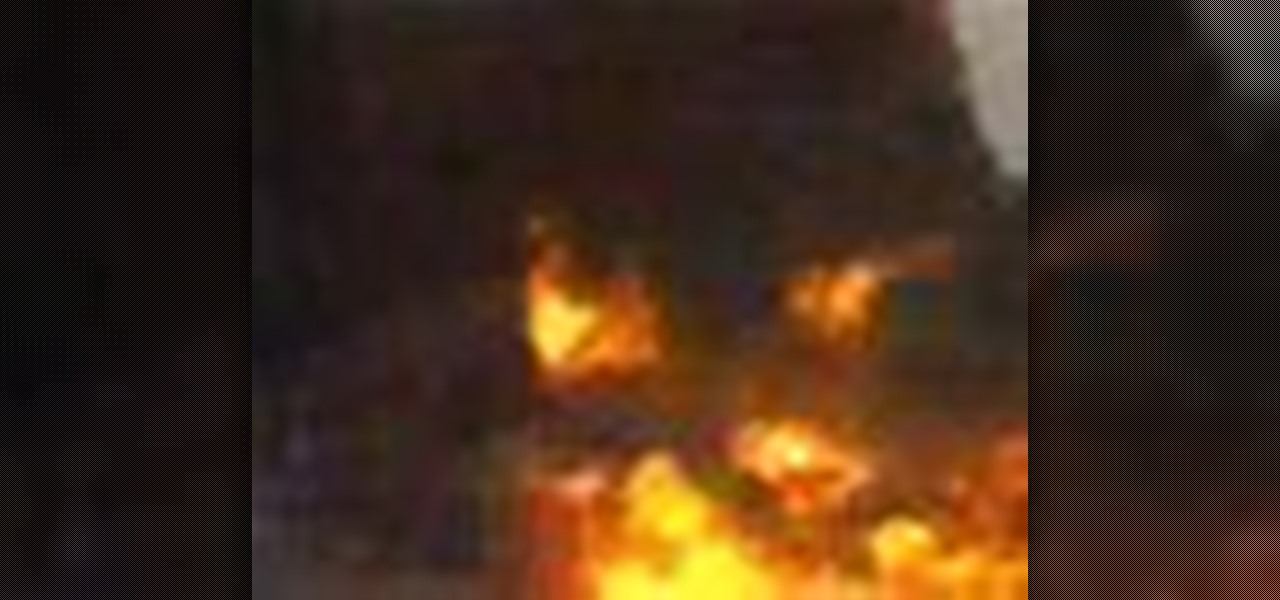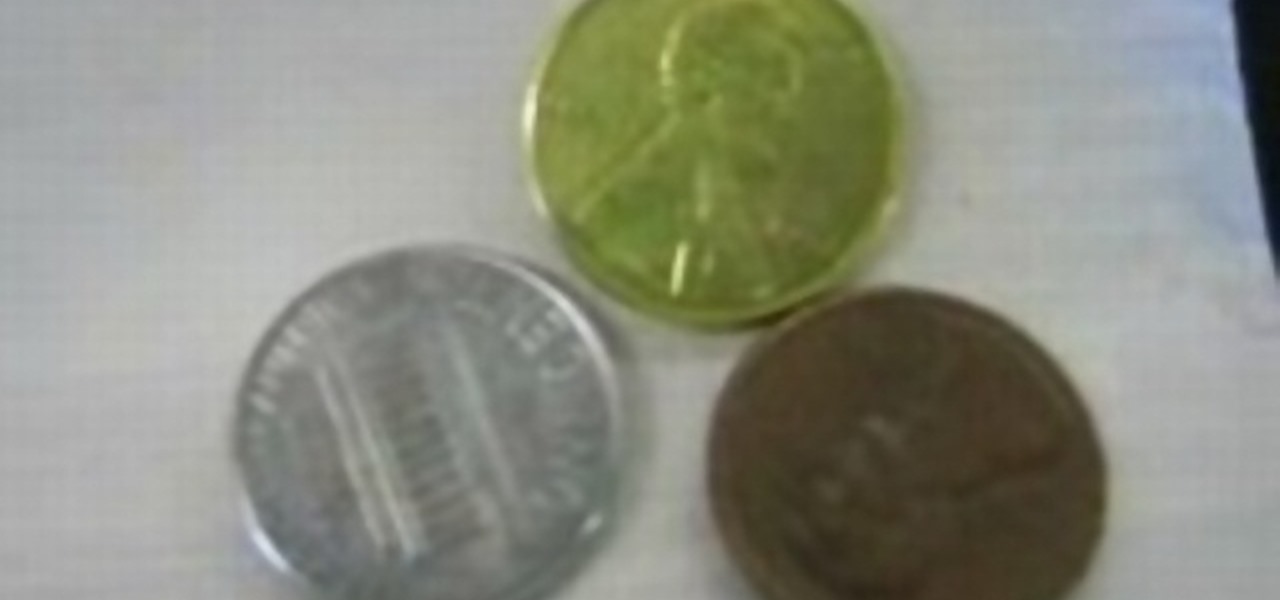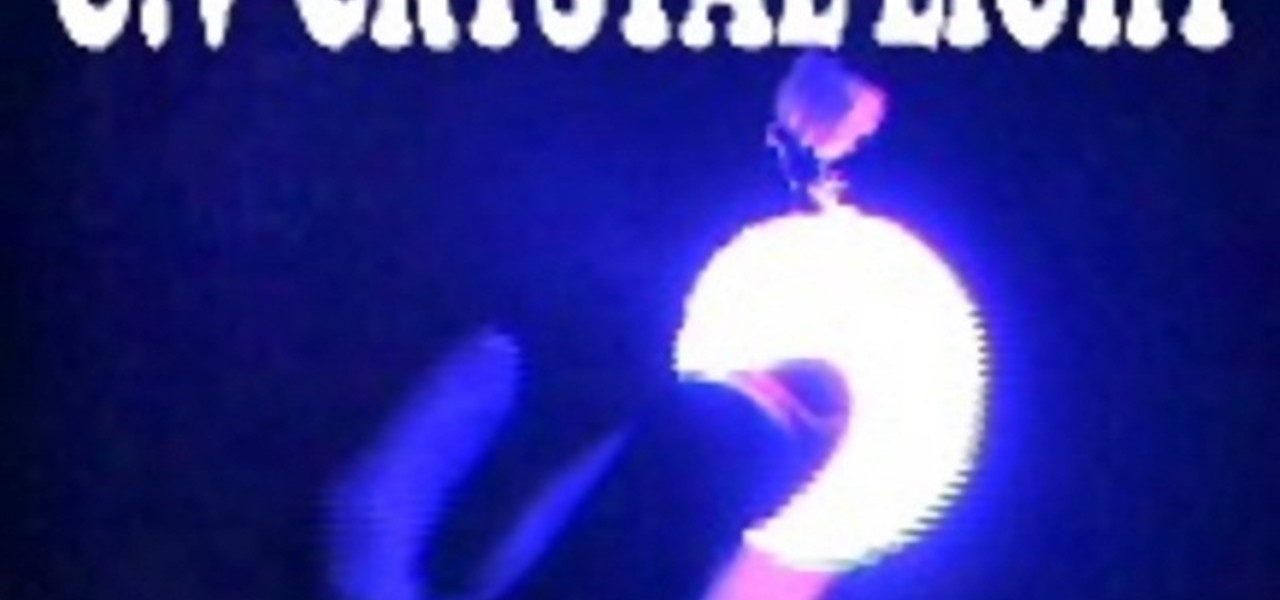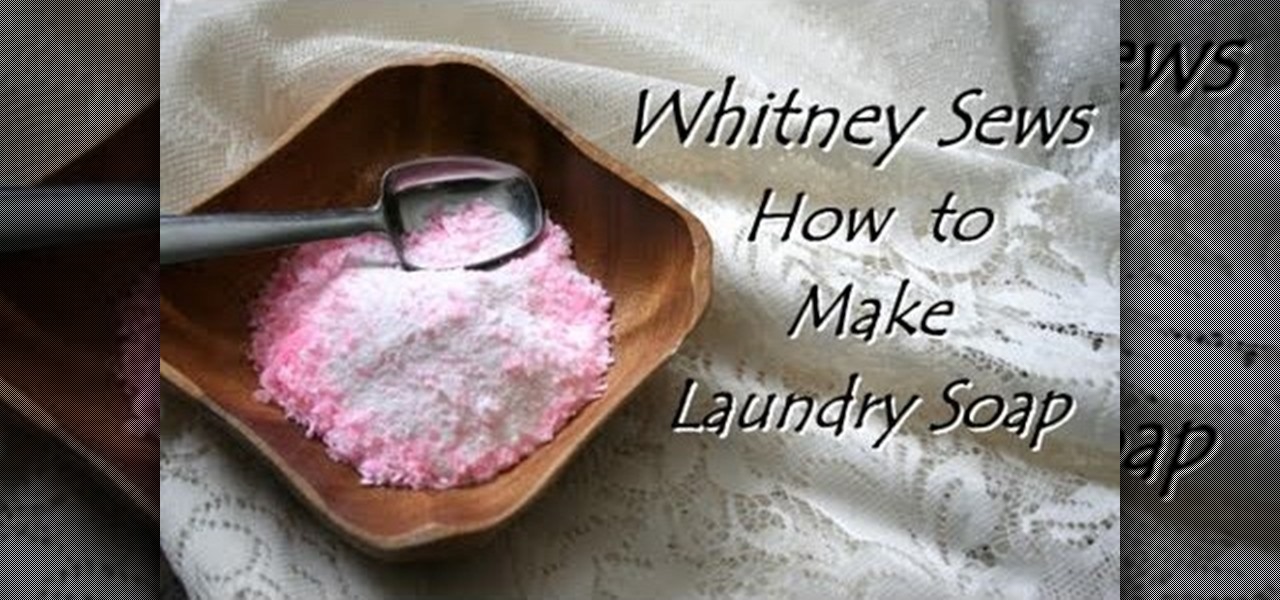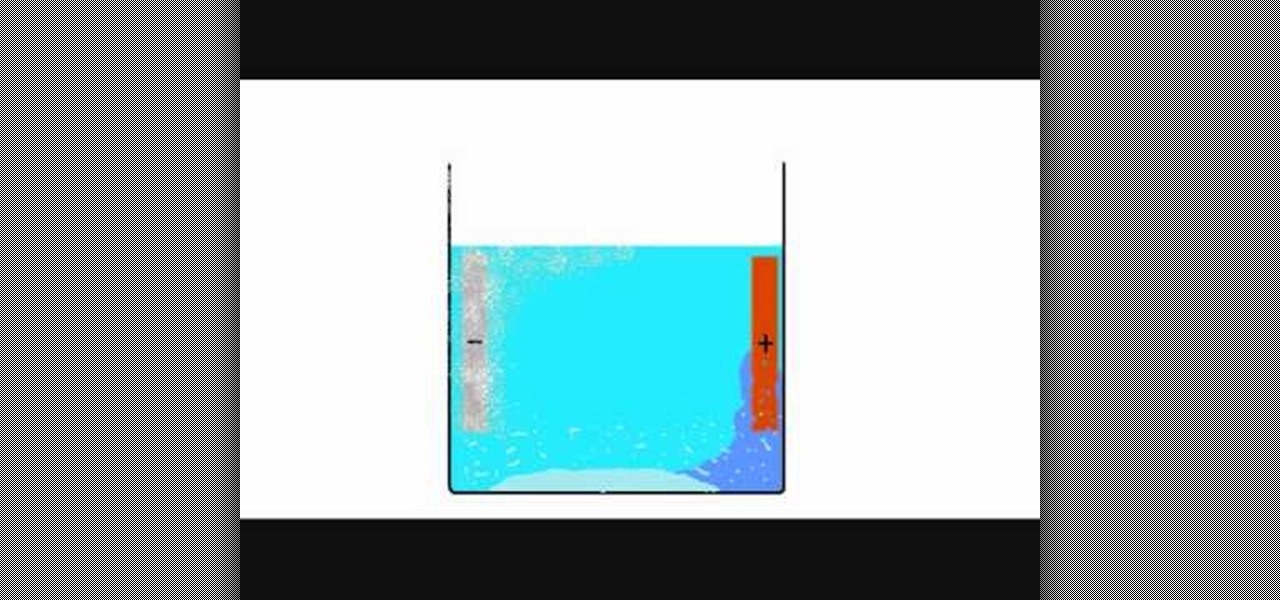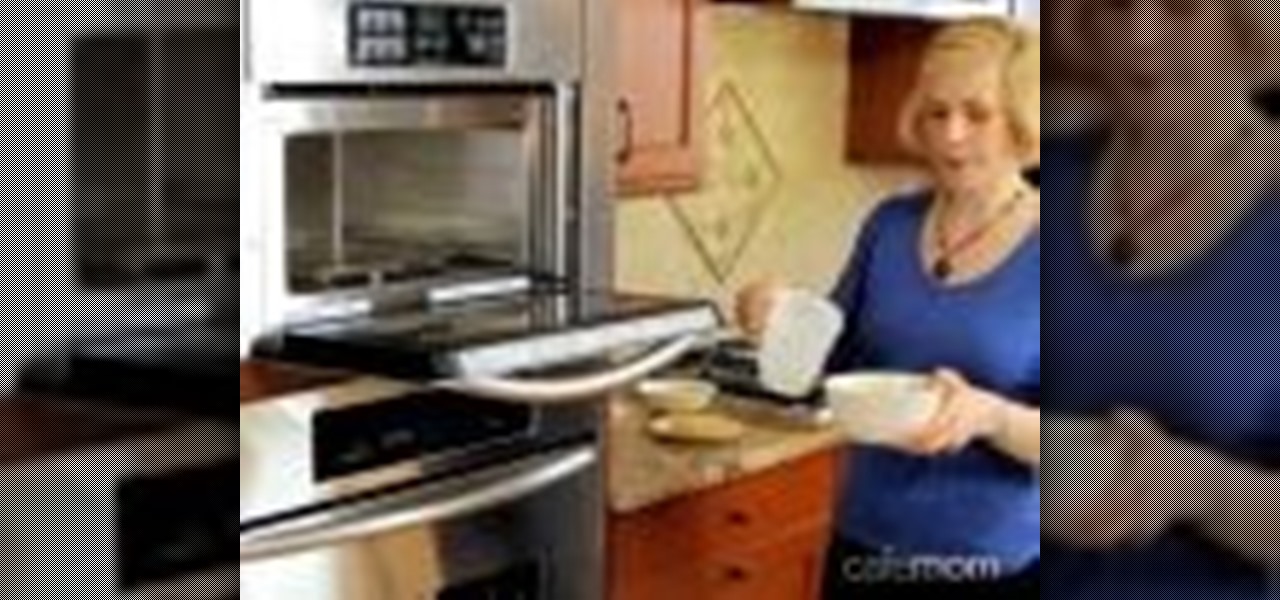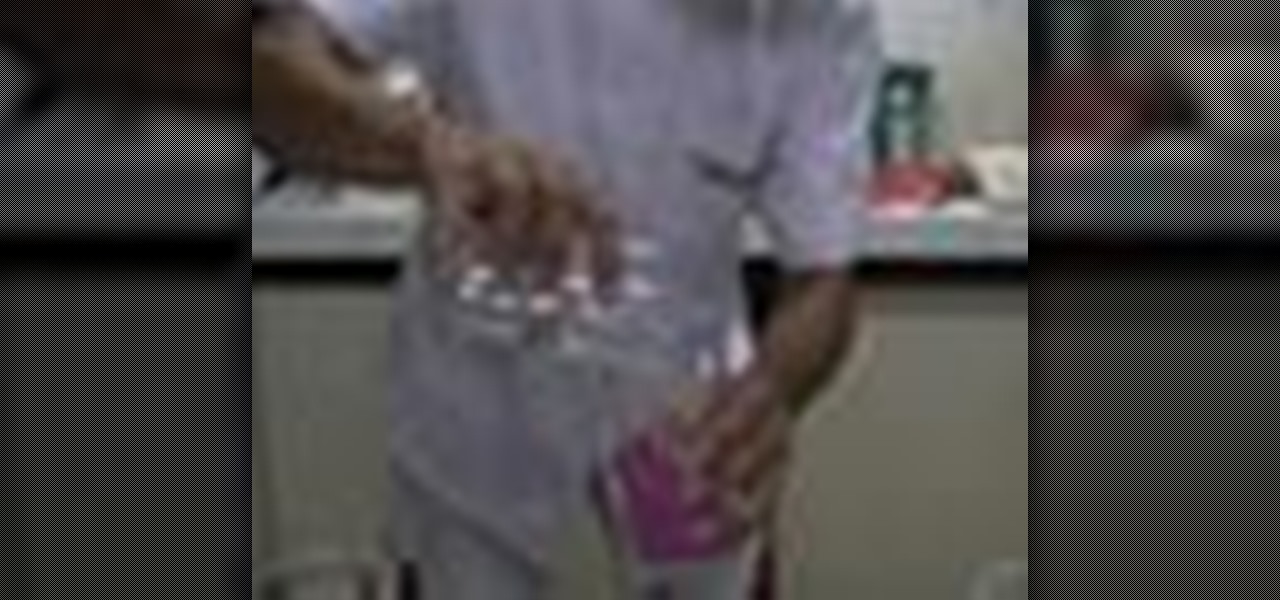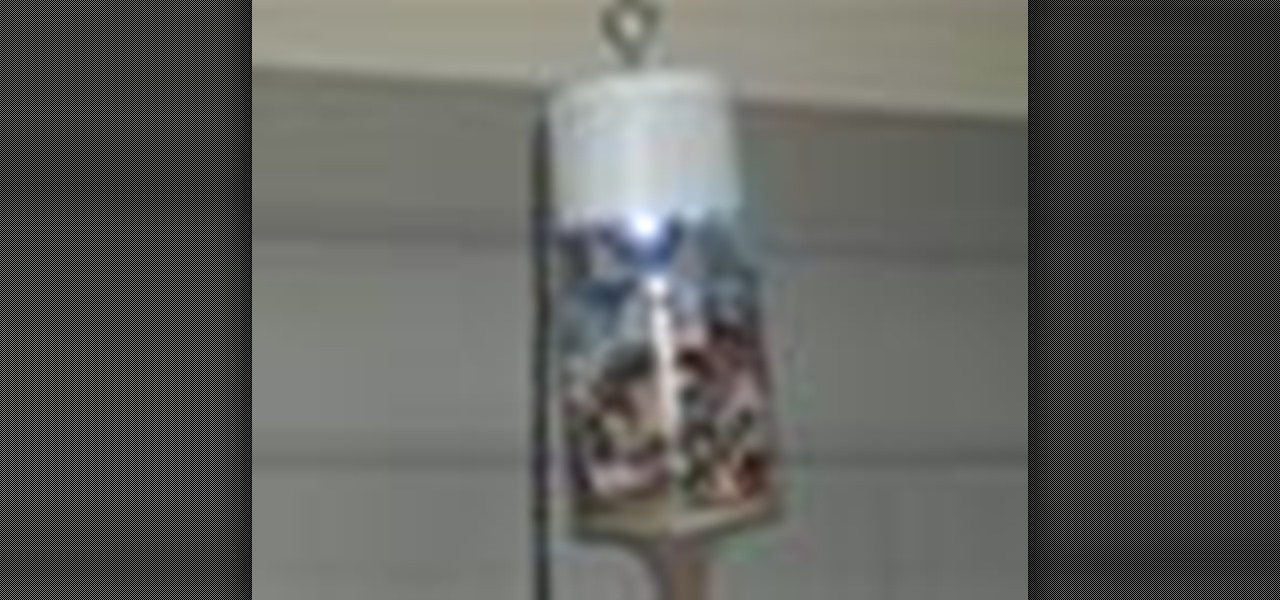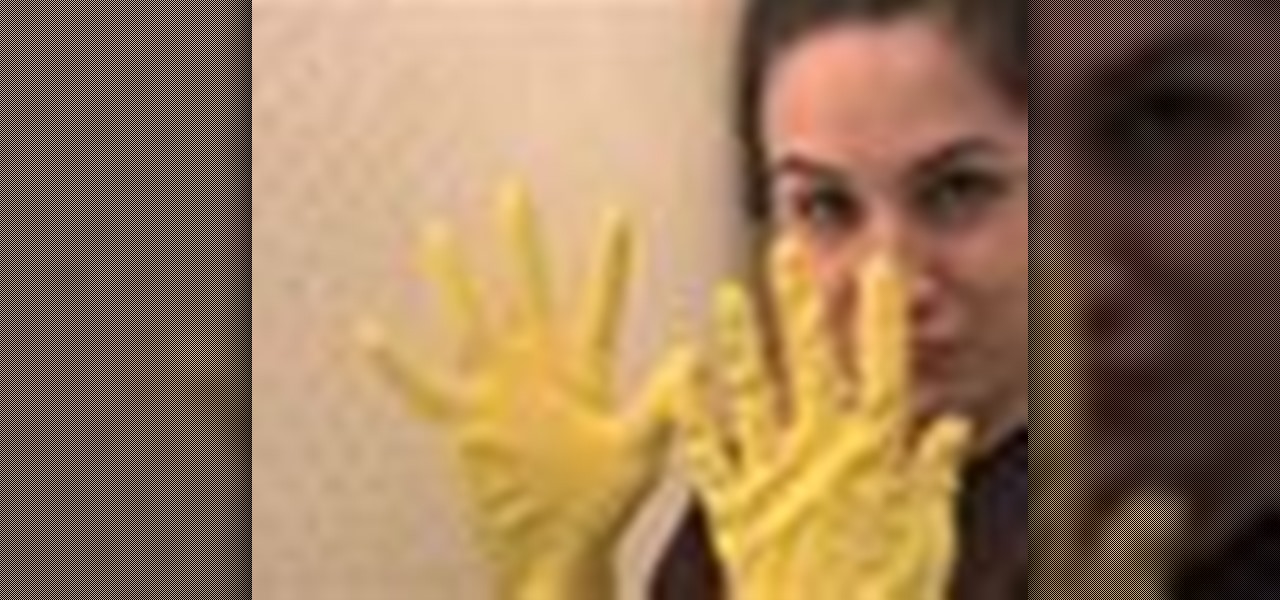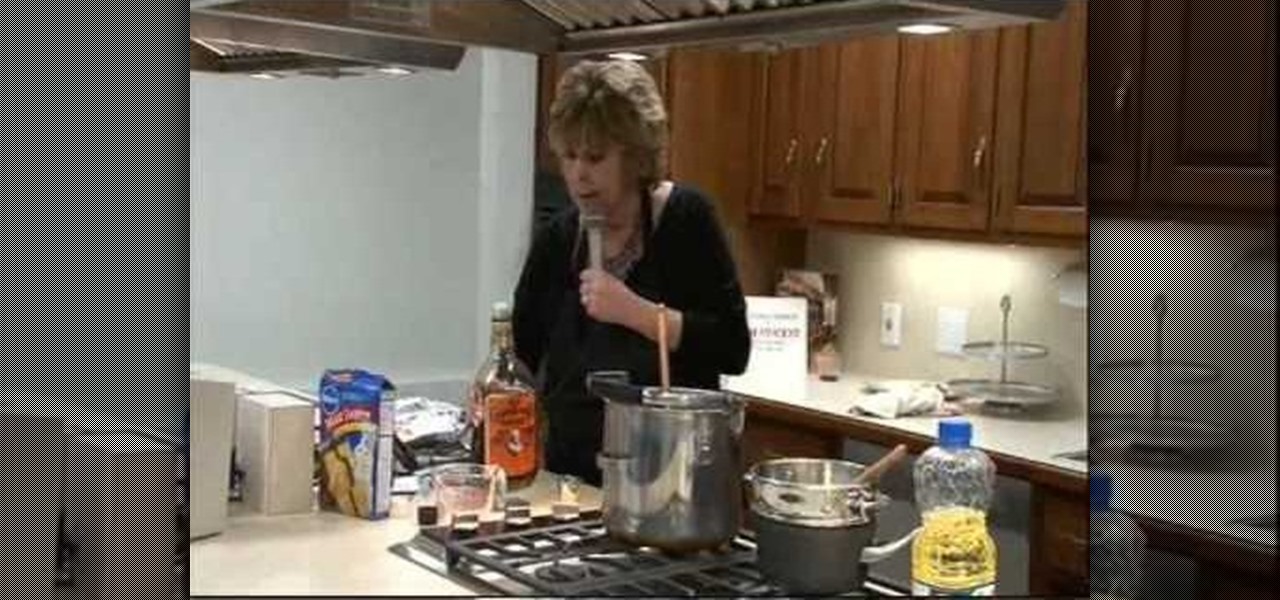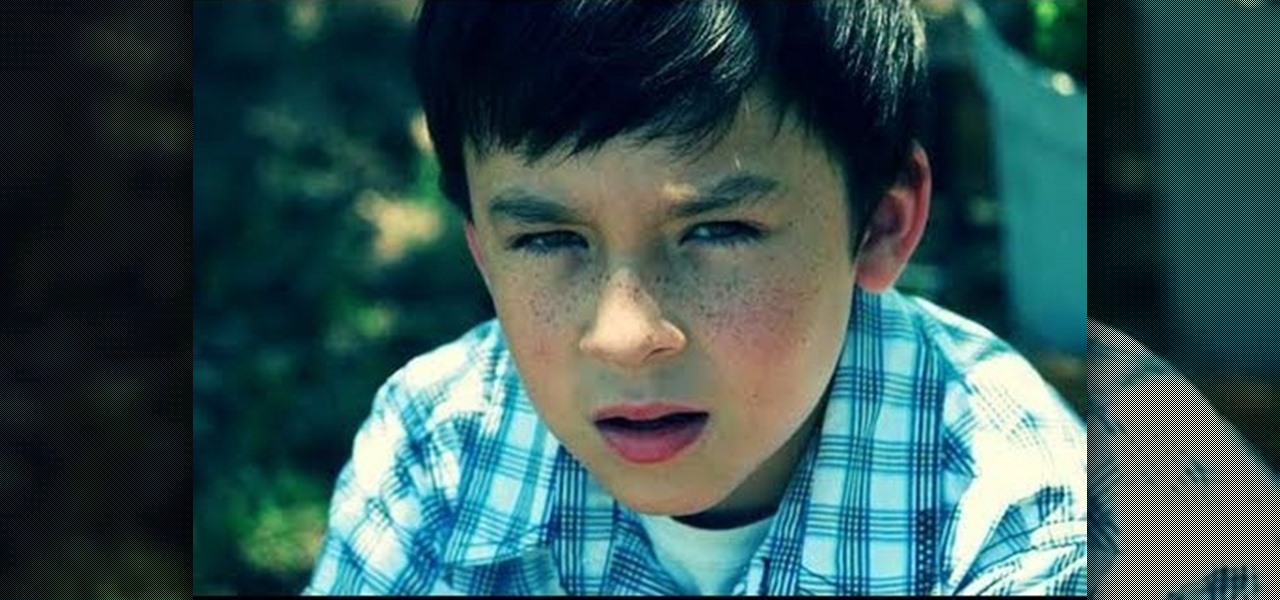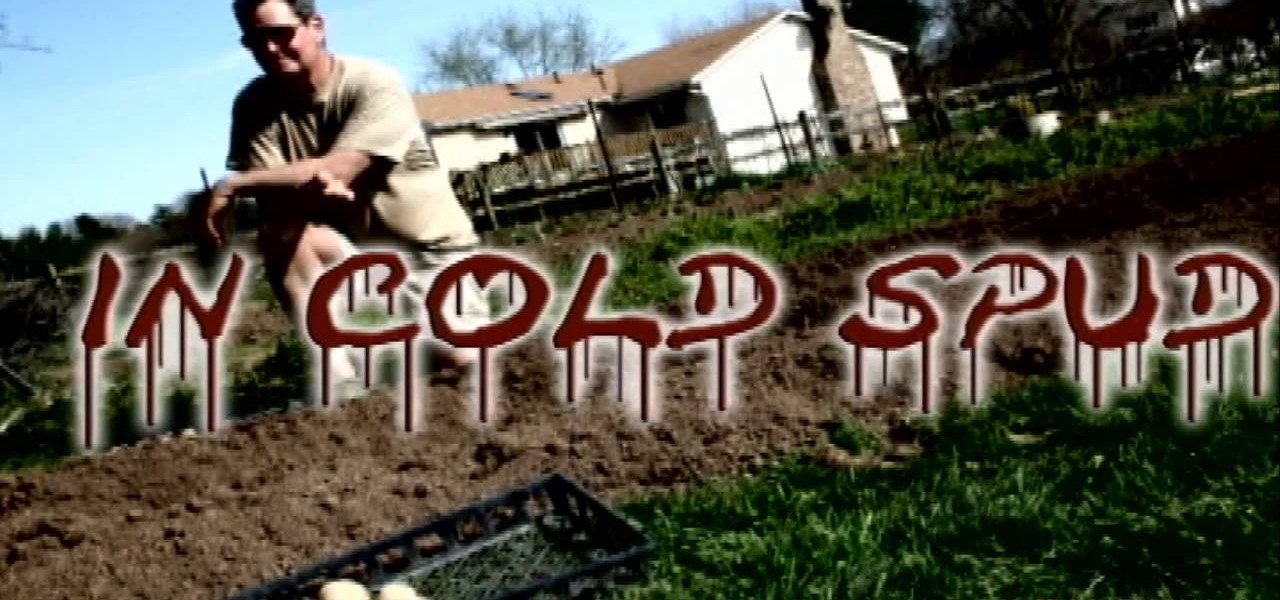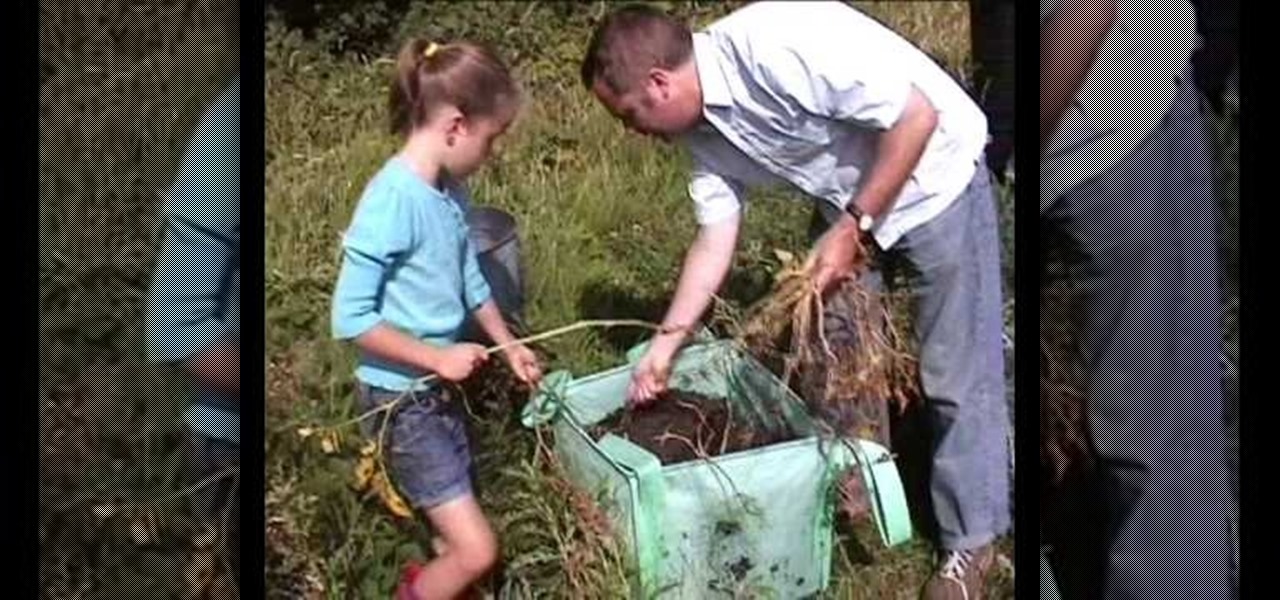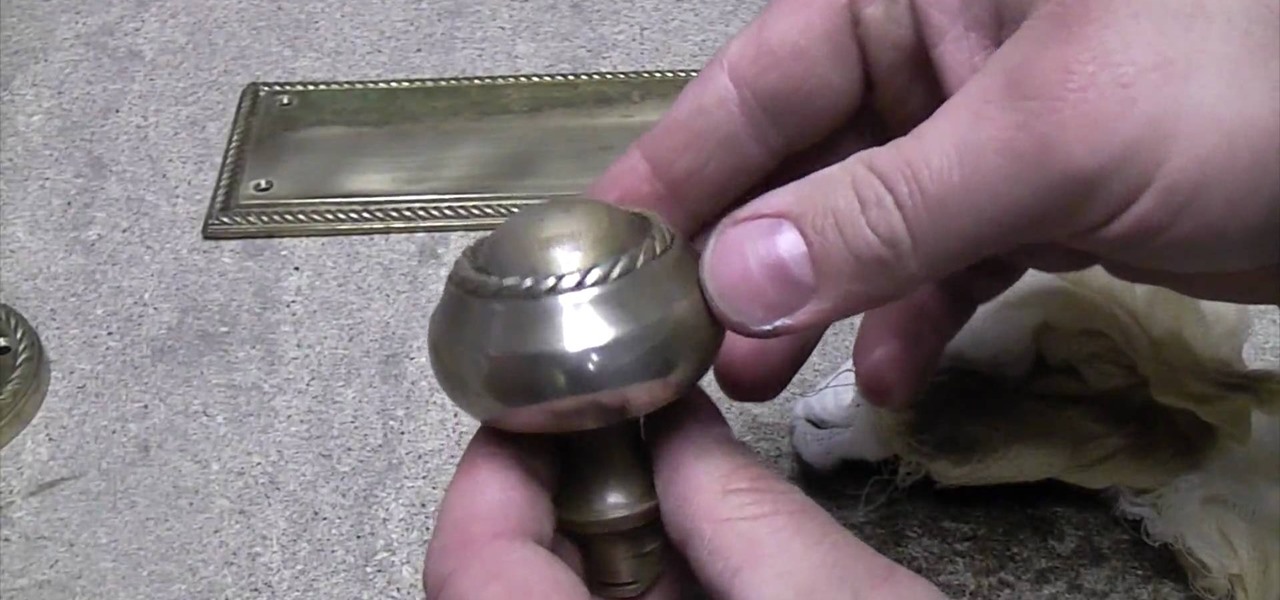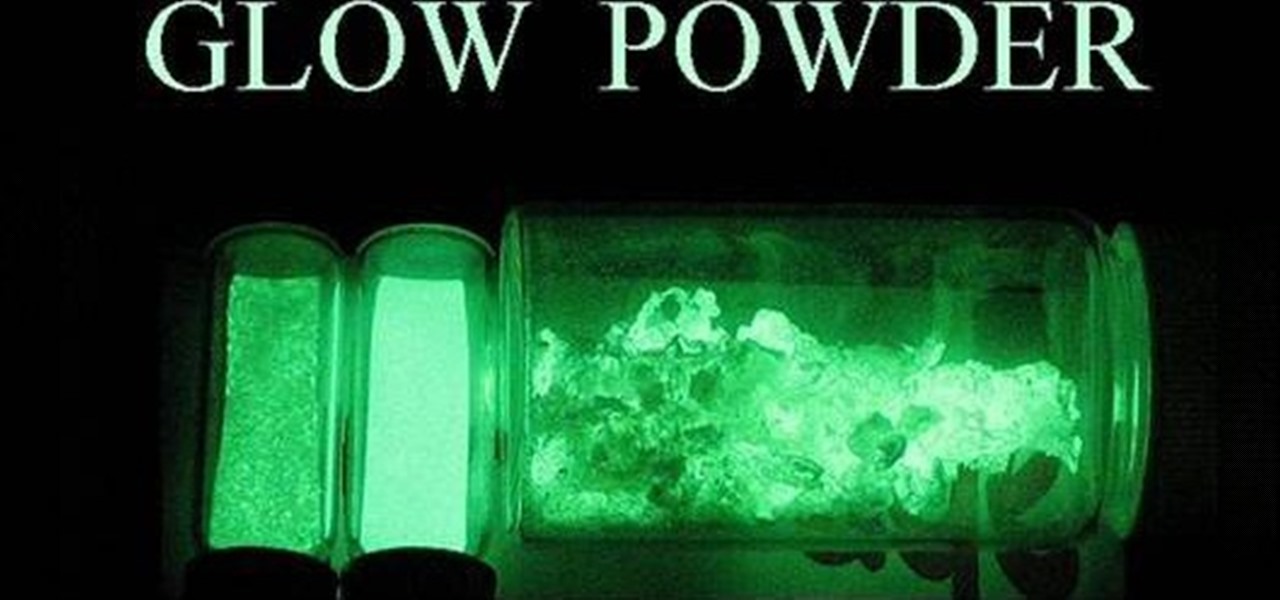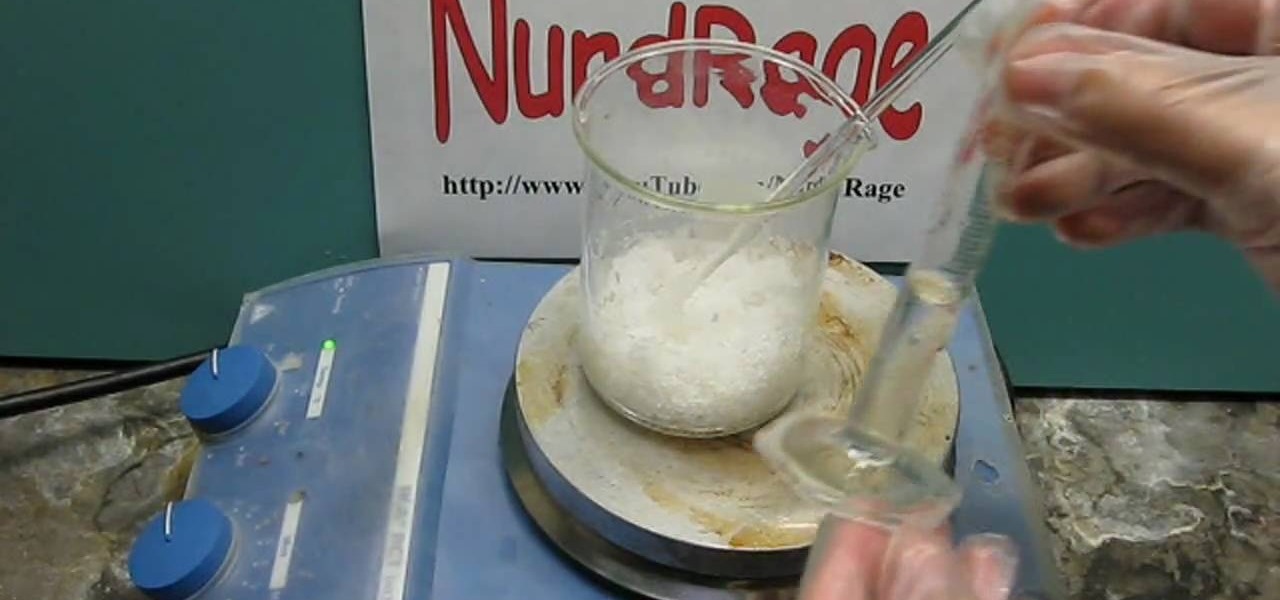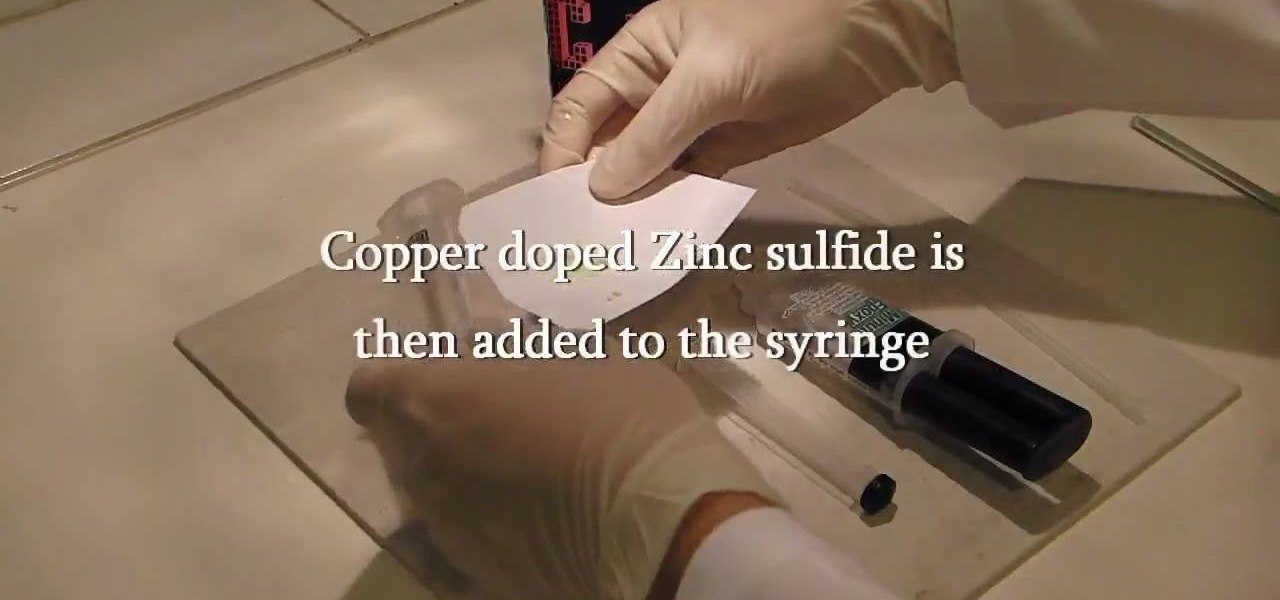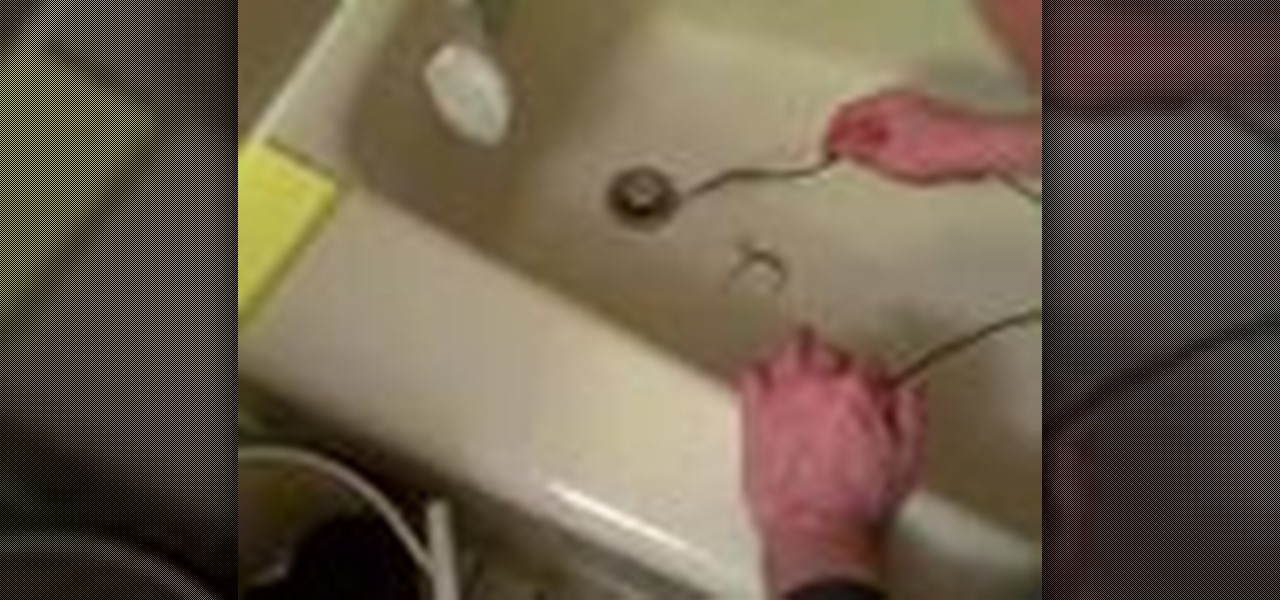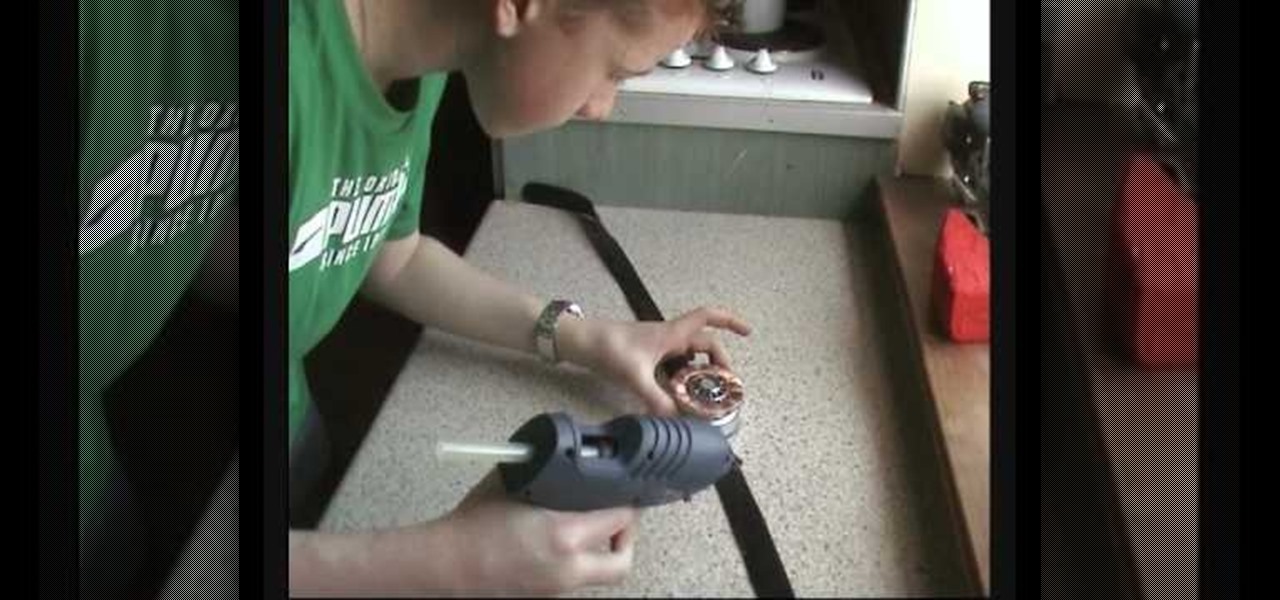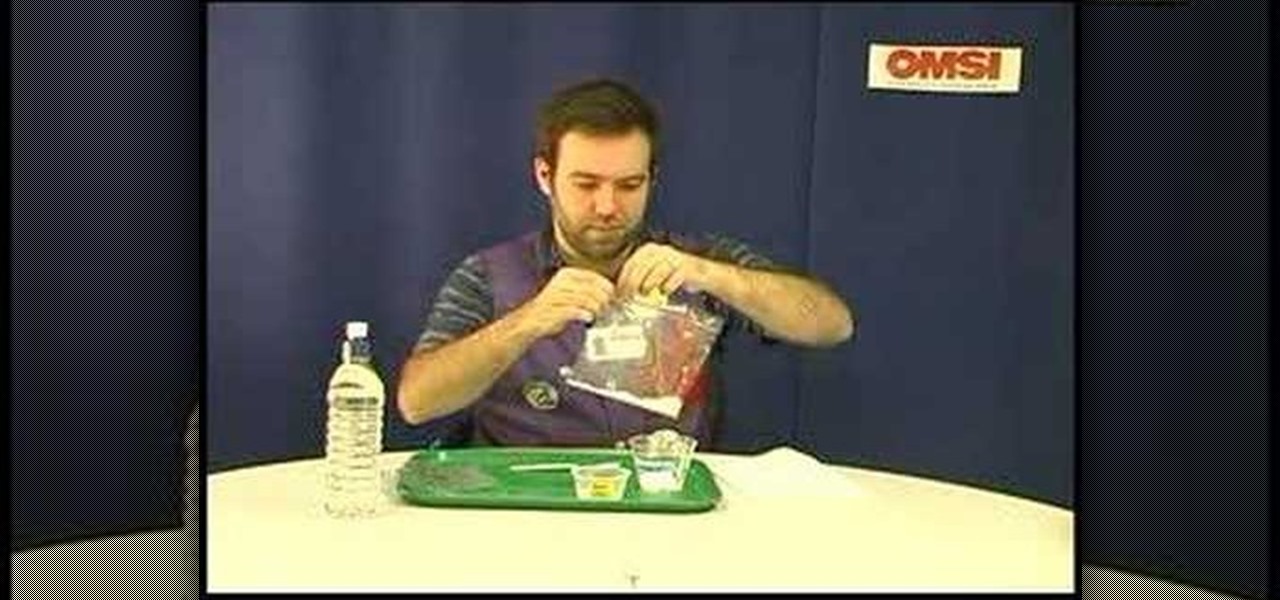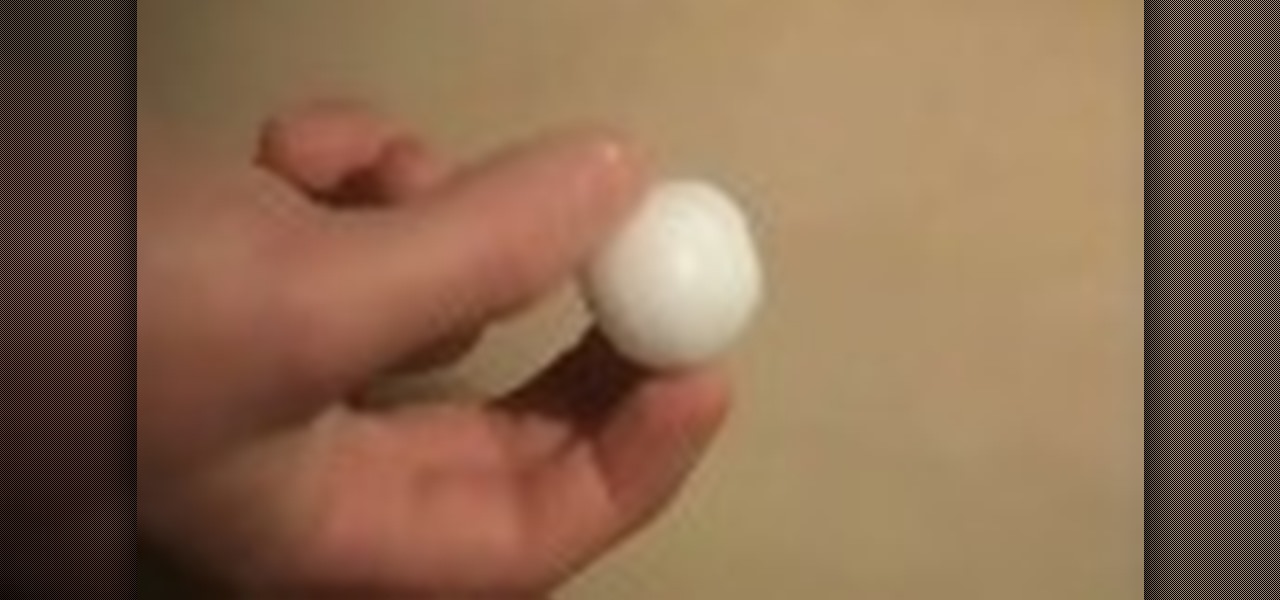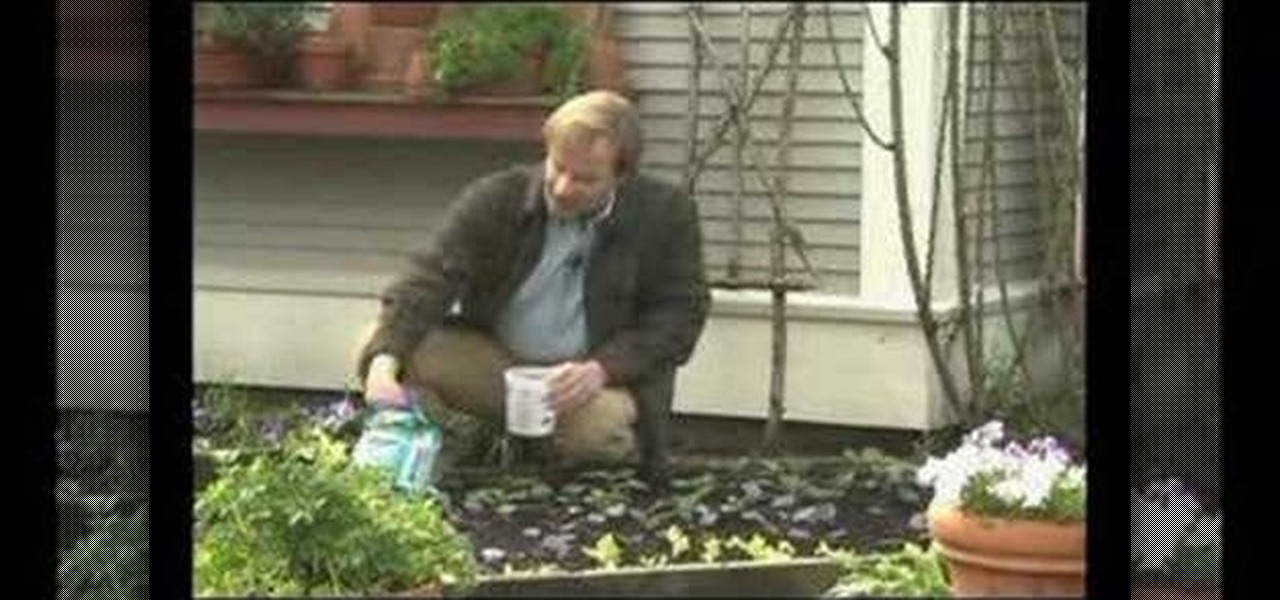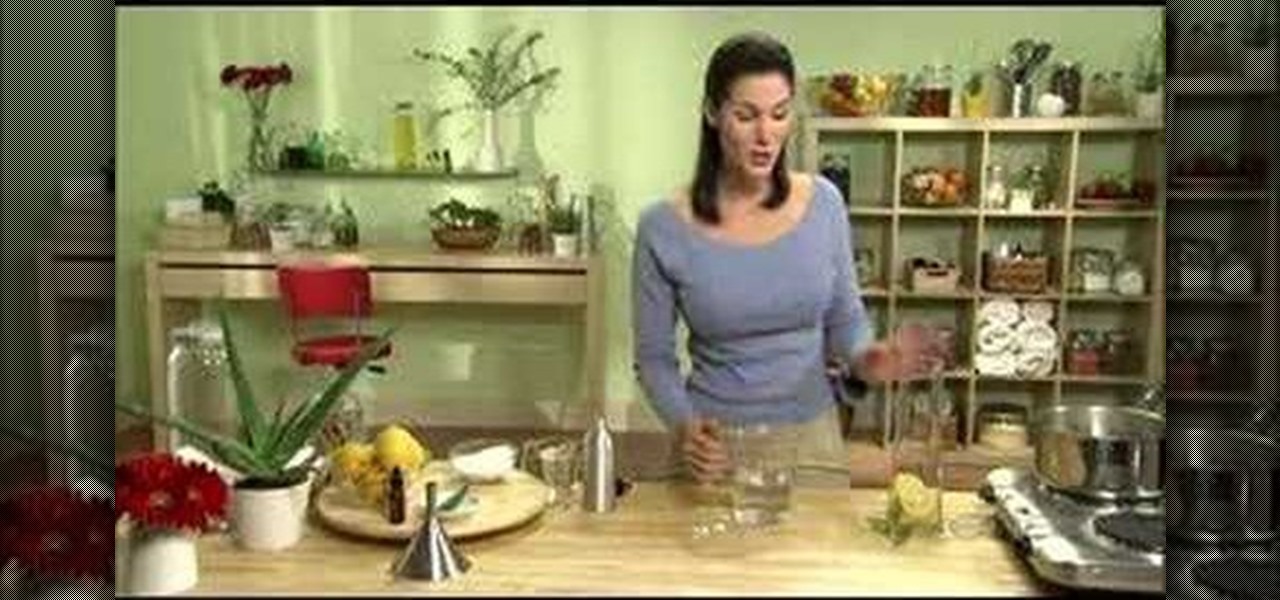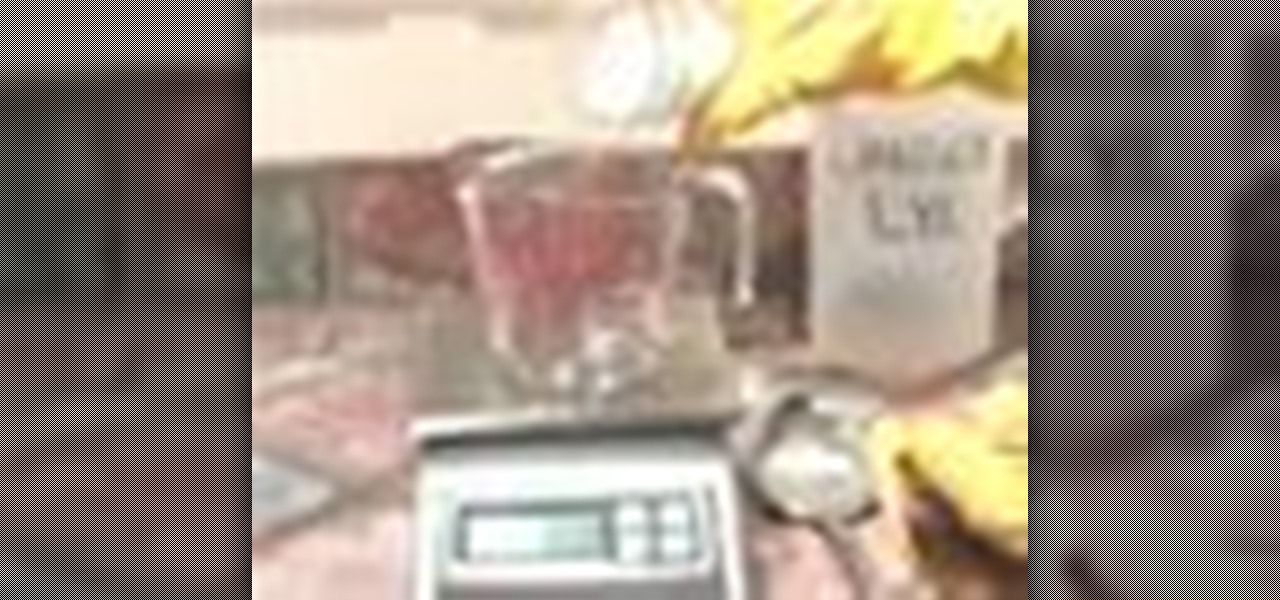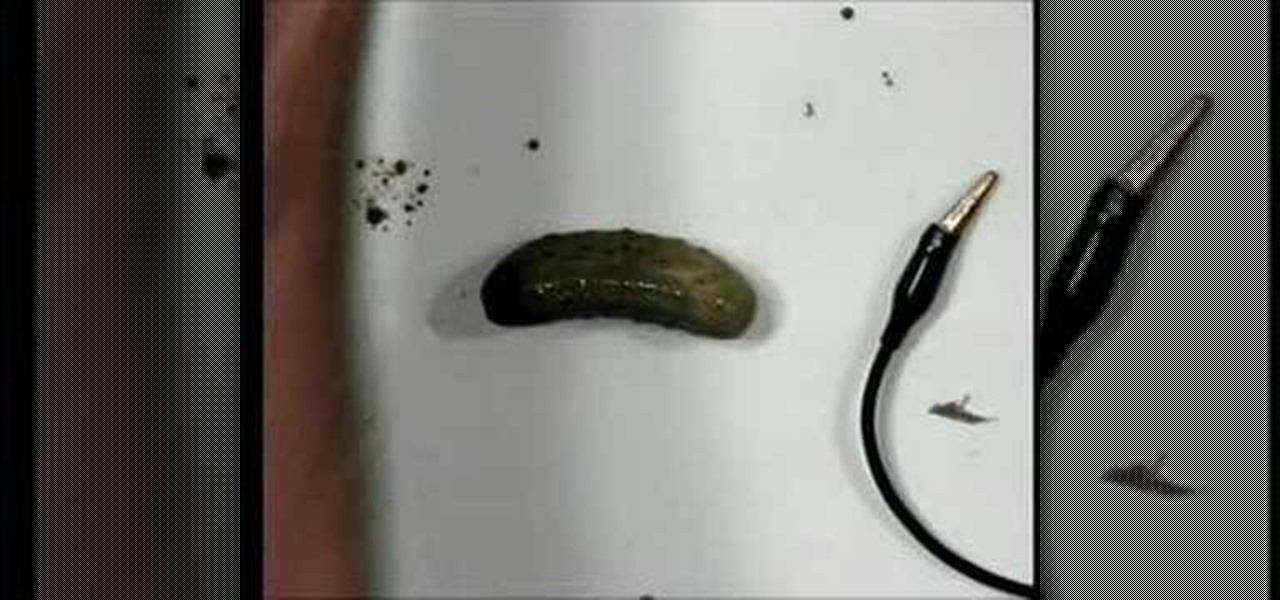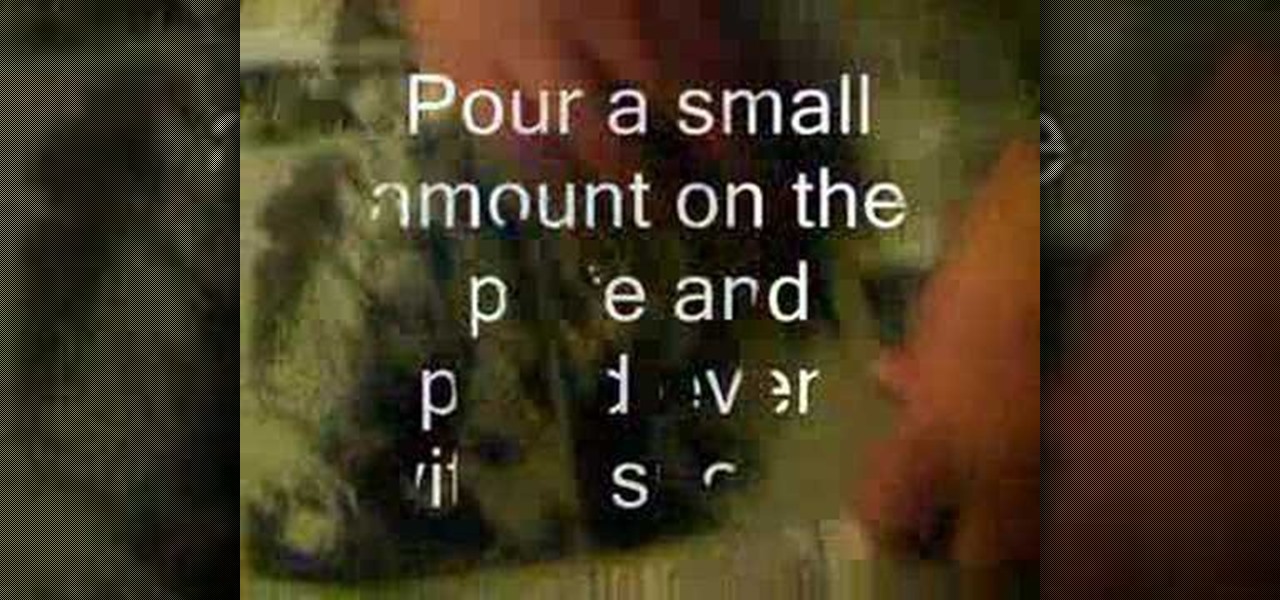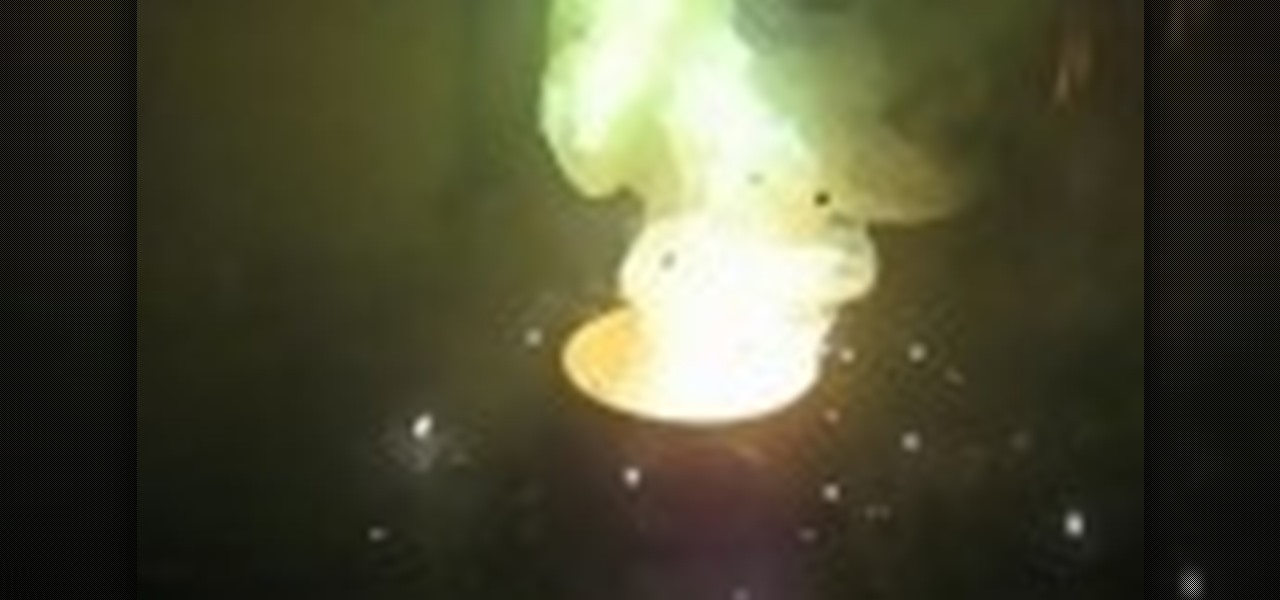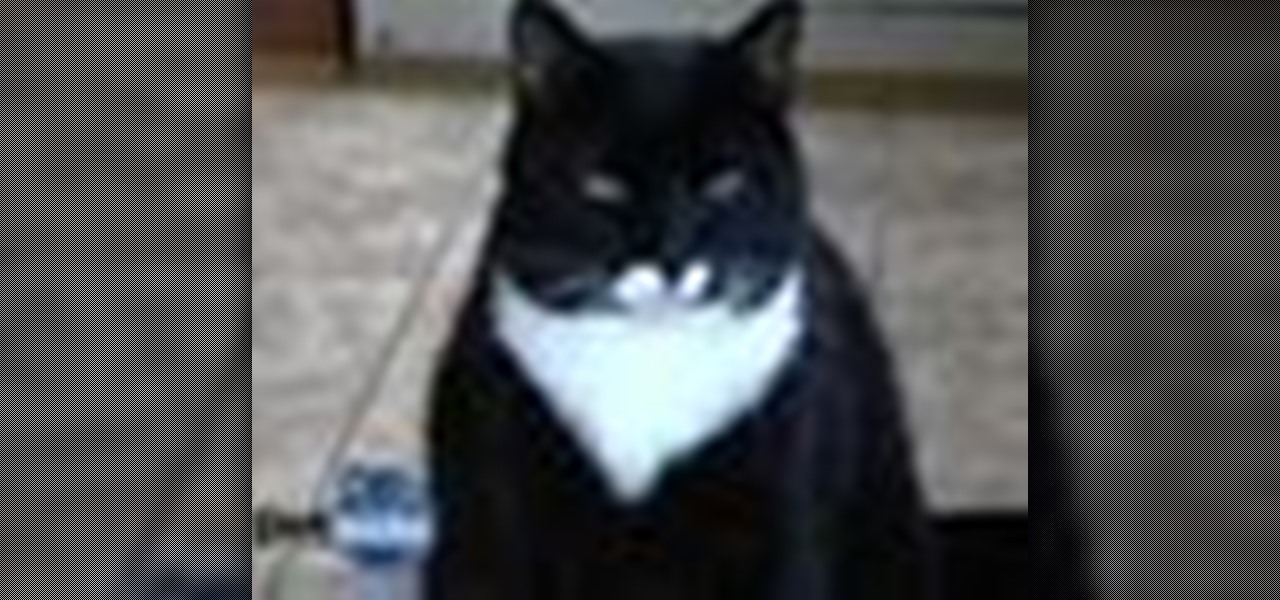
A lot of commonly used household items are actually poison for your furry friends. In this clip, learn all about which items can pose a danger for your dog or cat. It's not only chemicals that are bad for your pets, innocent seeming items like fruit, veggies, chicken bones, chocolate, human medications and many other hidden dangers exist as well.
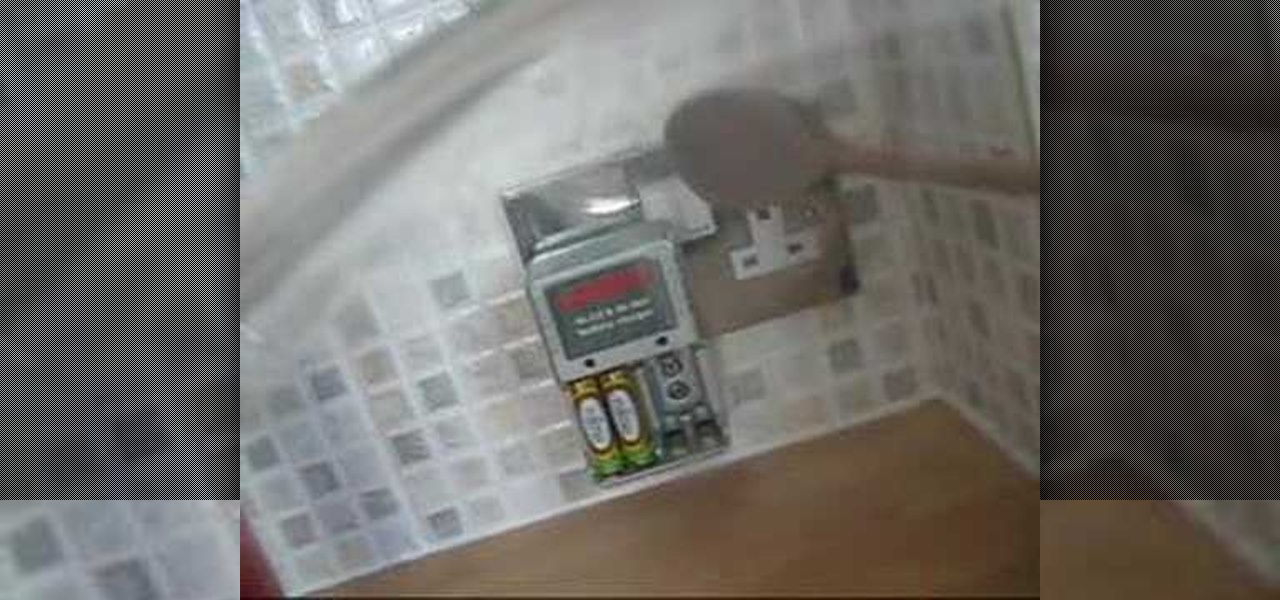
Can you recharge non-rechargeable alkaline batteries? Yes you can! Gary Cutlack from techdigest.tv risks chemical burns to demonstrate.
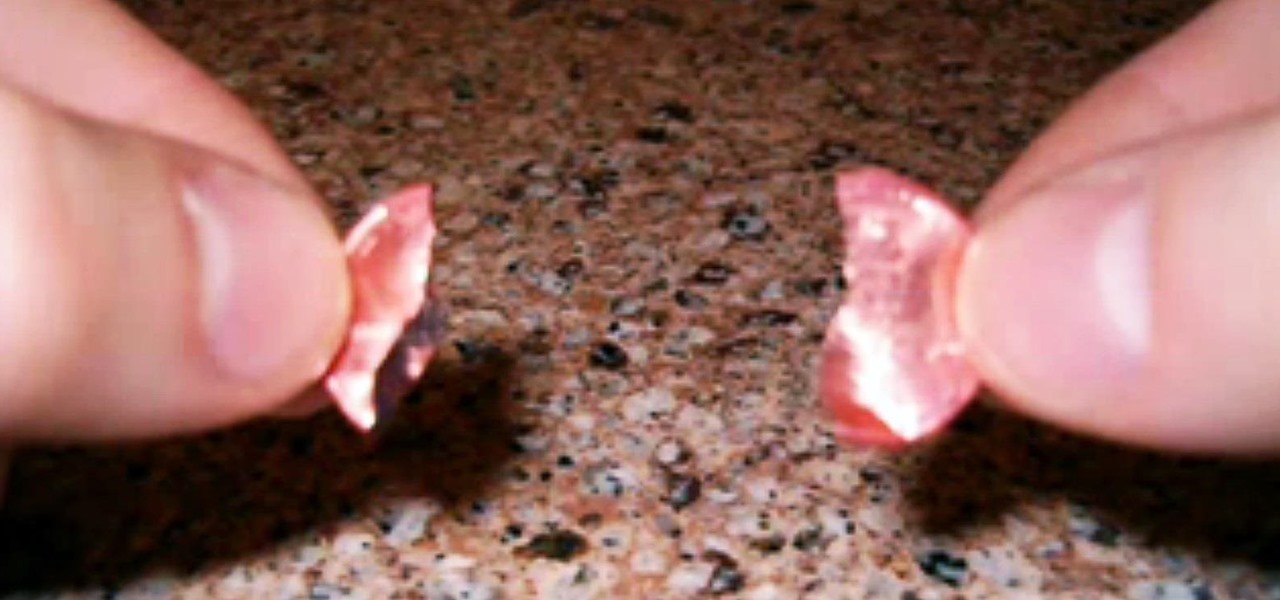
No, we're not lying. But before you try and tear a plain old penny in half, you should probably watch this video first or you may hurt your fingers. While ordinary pennies are very, very difficult to rip, if you get rid of the zinc core you are left with only the thin copper shell, which is itself very easy to tear apart.

Wired Science teaches you the science behind glow sticks by showing you how you can make your own with chemicals that you can obtain.

You've seen them at Disneyland's Fantasia. And in big budget movies like "Waterworld" and "Lord of the Rings." Spectacular, glowing fire effects that seem to ripple with the wind are a staple of action movies, and though it may seem like you need a super good video editing team to create such light shows, all you really need is some household chemicals.
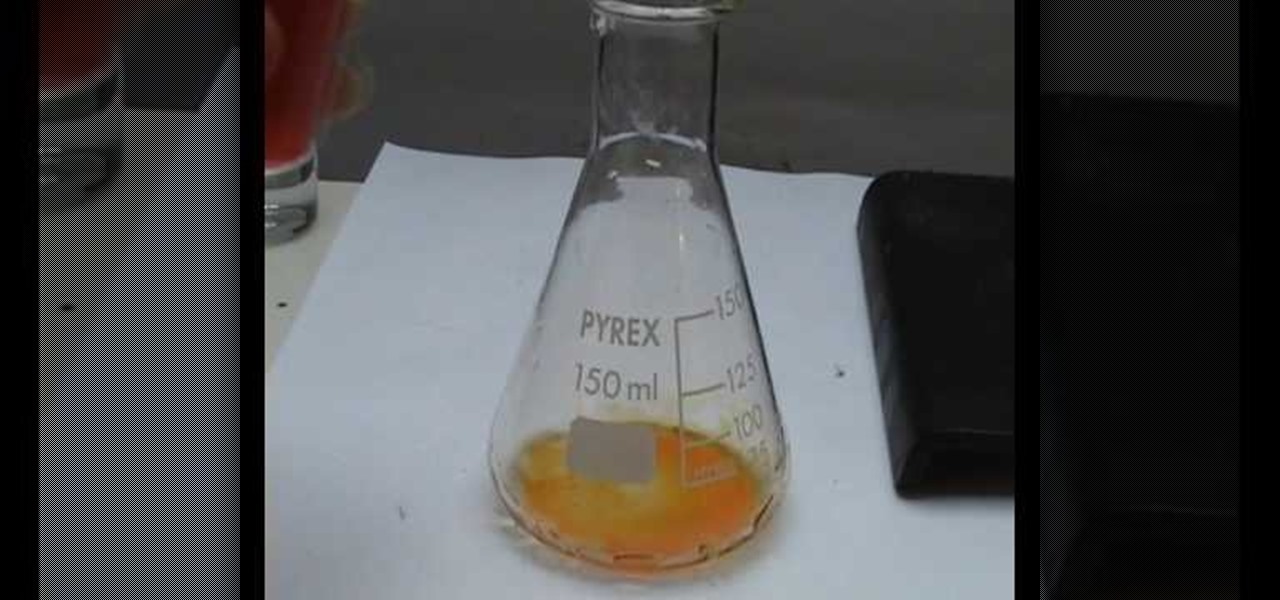
In this tutorial, we learn how to make a chemical indicator from kitchen items. First, make an indicator by grabbing some red cabbage and some vodka. Now, heat up some water until it's boiling, then place a smaller beaker inside the water with vodka inside of it. Place the red cabbage inside of the smaller beaker, then stir it up and let sit for 10 minutes. A lot of the color will come out with the cabbage being inside of the alcohol. After this, pour this into a storage bottle and pour the w...

Chris Giorni, Mr. Science with Tree Frog Treks, demonstrates how to make simulated frog skin. To make the simulated frog skin, you will need glue, water, borax laundry powder and food coloring. First, add a pinch of the powdered borax to water and dye it green using the food coloring. Next, water down the glue and place it on a plate. Add the borax solution to the plate. Mix the compound with your fingers. It will quickly form a long chain polymer or sticky frog skin. Frogs breathe through th...

Did you know that willow bark contains salicin, a similiar chemical to aspirin? If you have a headache on your next outdoors adventure, find the remedy in nature! Learn some mountain man tricks for quick pain relief in the wild.

Use sawdust to draw the stains out of carpet, floormats, etc. It saves energy since you don't have to wash towels and will be thrown away anyway. This is a quick housekeeping trick that leaves your floors clean and does not hurt the environment. Make sure you properly dispose of chemical and oil waste.

Steampunk, a vintage Victorian mechanical style, is one of the hottest design trends to date since faux bois. Get in on the trend while creating many hours of fun for yourself and friends by making this awesome steampunk style chess set. This chess set is comprised of various pieces of hardware, a found table, and common household chemicals.

Burns come in different types (thermal, chemical, electrical and radiation), levels (partial and full) and degrees of severity (first, second and third). Watch this U.S. Navy video to learn how to manage and initially treat burn casualties.

Turn pennies from copper to silver then to gold with a few household chemicals.

Make a crystal LED light from the chemicals in a cold compress that runs on USB power.

Hydrazine sulfate has many uses, but most notably, it's been used under the trade name of Sehydrin, a treatment for anorexia, cachexia and some even think cancer. But for we DIY chemists, it's useful for something entirely different— as a substitute for the more dangerous pure liquid hydrazine in chemical reactions. NurdRage shows you how to make it via some hypochlorite and the Ketazine process.

When it comes to staying safe, we all know that dish detergents, spray cleaners, and any sort of bleaching cleaners are bad for our health, since they distribute potentially cancer-causing toxins into the air.

In this home-science how-to, we learn how to synthesize copper hydroxide Cu(OH)2 using copper metal and the electro-chemical approach. For detailed, step-by-step instructions, and to get started making your own copper hydroxide, watch this video guide form YouTube user sciencoking.

Is your microwave full of food and sauce spatter? You can easily remove all sorts of food detritus without using harsh or potentially toxic chemicals - all you need is to microwave a lemon in some water for a few minutes. Cleans easily, and your microwave smells fantastic!

One of the most famous miracles of Jesus is turning water into wine. This process is not easy for the mortal to perform, but it is possible using modern chemistry. Watch this video to learn how to perform a water into wine magic trick with powerful acids which you MUST be careful handling.

Killing bugs used to be the domain of fancy chemicals that, it turns out, hurt us as much or more than the bugs. If you have a flying pest problem and need a green way to control it, watch this video to learn how to make a DIY wind tunnel trap for your insect nemeses.

Lime scale is one of the three most common types of dirt to afflict your shower. It is hard to get rid of and prevent, but not impossible, and this video will teach you chow chemicals and hard work can keep your shower beautiful.

As Peggy from "Married With Children" demonstrated, every woman loves to kick back with a plate of bon bons and a good soap opera. Sure, you can purchase your bon bons from a store, but why ingest all those artificial preservatives and chemicals when you can make your own at home?

Cross processing is an old photography technique where the actual film is developed using the 'wrong' chemicals. It can add a unique color variation, like giving your subject green-tinted skin. It's possible to replicate this cross processing technique using Adobe Photoshop, and this tutorial demonstrates how.

In this next gardening tutorial, you're going to find out how to plant your very own potatoes from scratch. It's a great way to save money and make sure that you a veggie that isn't covered in any sort of chemical.

There are many benefits to growing your own vegetables and fruits. One of the most obvious is the fact you'll be saving money and preventing any harmful chemicals from entering the body. In this tutorial, you'll find out how to grow one of the most commonly eaten foods out there: potatoes. This time, it's not in a box or planter, but instead in a bag. Check it out and enjoy!

The video is a description of how to refurbish a brass door frame, and door knob that has gone dull due to the lacquer. Purchase lacquer and metal polish at a hardware store. Before beginning work, remove the circulate at the back of the door knob with circulate pliers. Take the component parts of the door knob apart and set the spring and clip aside to be replaced later. Take a clean cloth and put metal polish on it. Using the cloth, polish the knob. It may take a while to get all the grime ...

It's a stormy winter night, and you're electricity goes out. You could grab some candles to add a little light to your life, or you could use glow-in-the-dark chemicals for a cool luminescent.

There's a few reasons why you might want to purify chemicals by recrystallization, but the best one could be luminescence glow-in-the-dark dust.

Make a reusable glow stick, glow-in-the-dark-style! Imagine, you'll never have to buy one of those ChemLite's again, because you can reuse this homemade glow stick over and over again. This video tutorial will show you how to make a permanent, reusable glow stick. The materials in this experiment are simple: epoxy resin, straw, and some phosphor powder.

The number one culprit for a slow or clogged up water drain is hair. Check out this video tutorial to learn how to open slow or clogged drains with the Drain Claw. The Drain Claw is amazing at removing hair trapped in shower drains, bathtubs, and bath sinks. You don't need chemicals to get rid of all that hair, you just need the Drain Claw.

Adam's tutorial on an Iron Man Arc Reactor Prop.

Check out this instructional science video that demonstrates how to perform the experiment "Matter of Degree." From the Oregon Museum of Science and Industry's teacher curriculum, "No Hassle Messy Science with a Wow", these are chemical reactions that result in changing temperatures. Follow the step by step instructions to witness a temperature change. The "Matter of Degree" is a great experiment for students to perform.

Check out this instructional science video that demonstrates how to perform the experiment "Of Cabbages and Kings." From the Oregon Museum of Science and Industry's teacher curriculum, "No Hassle Messy Science with a Wow", learn about this chemical reaction featuring cabbage juice. This is a great experiment for your students to perform. Follow the simple instructions outlined in this video and do the "Of Cabbages and Kings" science experiment.

Make a great ball toy from chemicals, that are not hard to get. The result, if you follow along with this how-to video, is a very bouncy ball. You will need, ethanol, water glass, rubber gloves, beakers and a popsicle stick. Watch this video toy tutorial and learn how to make your own super bouncy ball.

Allen shows us how to organically fertilize your vegetable garden. Insect and pest control as well as fertilizer can be used to keep a garden safe for the whole family, as well as pets, as well as producing food free of chemicals. Watch this video gardening tutorial and learn how to organically fertilize a garden.

Forget about those chemical store bought flea repellents. This how to video shows you how to make a safe and simple flea repellant for dogs and cats. All you need is lemon, distilled water, and cotton balls. Keep your house and pets flea free with this natural repellent.

Start a fire using water. It is a pretty cool trick. This guy takes a couple of goofy household chemicals and creates a powder that explodes when water touches it.

Lye can cause chemical burns and the fear of getting burned prevents arts enthusiasts from making homemade soap. Watch this video to learn how to safely make lye solution so you can go ahead and unleash the creative child in you.

This is a chemical demonstration of the excitation of sodium atoms in a dill pickle by connecting it to 120 volts. Watch to learn how to electrify a pickle yourself.

This video walks you through the steps of how to do waterless lithography. Waterless lithography is a lithographic process that does not require heavy or expensive presses or too many toxic chemicals. It is based in the idea that water and silicone don't mix.

Once used as solid rocket fuel because the reaction requires no oxygen, sulfur and zinc react vigorously. The reaction with zinc produces flame and a near explosion. Sparks fly and smoke billows in this dramatic chemical demonstration.








